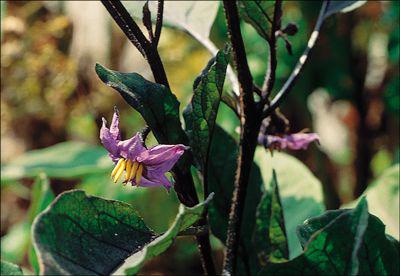Read Witchcraft Medicine: Healing Arts, Shamanic Practices, and Forbidden Plants Online
Authors: Claudia Müller-Ebeling,Christian Rätsch,Ph.D. Wolf-Dieter Storl
Witchcraft Medicine: Healing Arts, Shamanic Practices, and Forbidden Plants (37 page)


Black henbane (Hyoscyamus niger L.) is the most important witches’ plant in European history. (Photograph by Christian Rätsch.)

Monkshood (Aconitum napellus L.) is considered the most powerful poison in the flora of Europe. It is one of the magical herbs of the witches of antiquity and one of the possible ingredients of the so-called witches’ salves. (Photograph by Christian Rätsch.)

The autumn crocus (
Colchicum autumnale
L.) was the most important medicinal herb of Medea. (Photograph by Christian Rätsch.)

In antiquity the opium poppy (
Papaver somniferum
L.) was considered the sacred plant of the Great Goddess, in particular Demeter and Aphrodite. Its latex yields the psychoactive and pain-relieving raw opium. Opium was mentioned a number of times as an active ingredient in witches’ salves. (Photograph by Christian Rätsch.)

The peony of Cyprus (
Paeonia mascula
[L.] Mill), the medicinal plant of the physician-god Paeon, also grew in the magical garden of Hecate. (Photograph by Christian Rätsch.)

The Flower of the hallucinogenic belladonna (
Atropa belladonna
L.). Bees collect nectar from it, which they transform into intoxicating or, more properly, psychoactive, honey. (Photograph by Christian Rätsch.)

The Flower of the yellow belladonna
(Atropa belladonna
L. var.
lutea).
This relatively rare variety was said to be more potent than common belladonna, and was preferred by witches. (Photograph by Christian Rätsch.)

Many of the nightshade plants are called
Tollkraut
(fool’s herb) because they have both psychoactive and aphrodisiac properties. This is the bloom of the Asian scopolia (
Scopolia anomala
[Link et Otto] Airy Shaw). (Photograph by Christian Rätsch.)

The bittersweet nightshade (
Solanum dulcamara
L.) is one of the more important European witches’ plants. (Photograph by Christian Rätsch.)

Black hellebore, or Christmas rose (
Helleborus niger
L.), is one of the most important medicinal plants of antiquity. It was identified with the magical plant moly and was an ingredient in witches’ salves. (Photograph by Christian Rätsch.)

Herb Christopher (
Actaea spicata
L.) was known as a witches’ plant and was one of the medicinal plants of Artemis/Diana. (Photograph by Christian Rätsch.)

Common butterbur (
Petasites hybridus
[L.] Fl. Wett.; syn.
Petasites officinalis
Moench) was feared as a diabolic magical substance of the witches, as can be seen from the common names devil’s cap and devil’s hand. In the early modern era the plant was considered a “valuable medicine against pestilence”—against diseases that were thought to be caused by witches. (Photograph by Christian Rätsch.)
